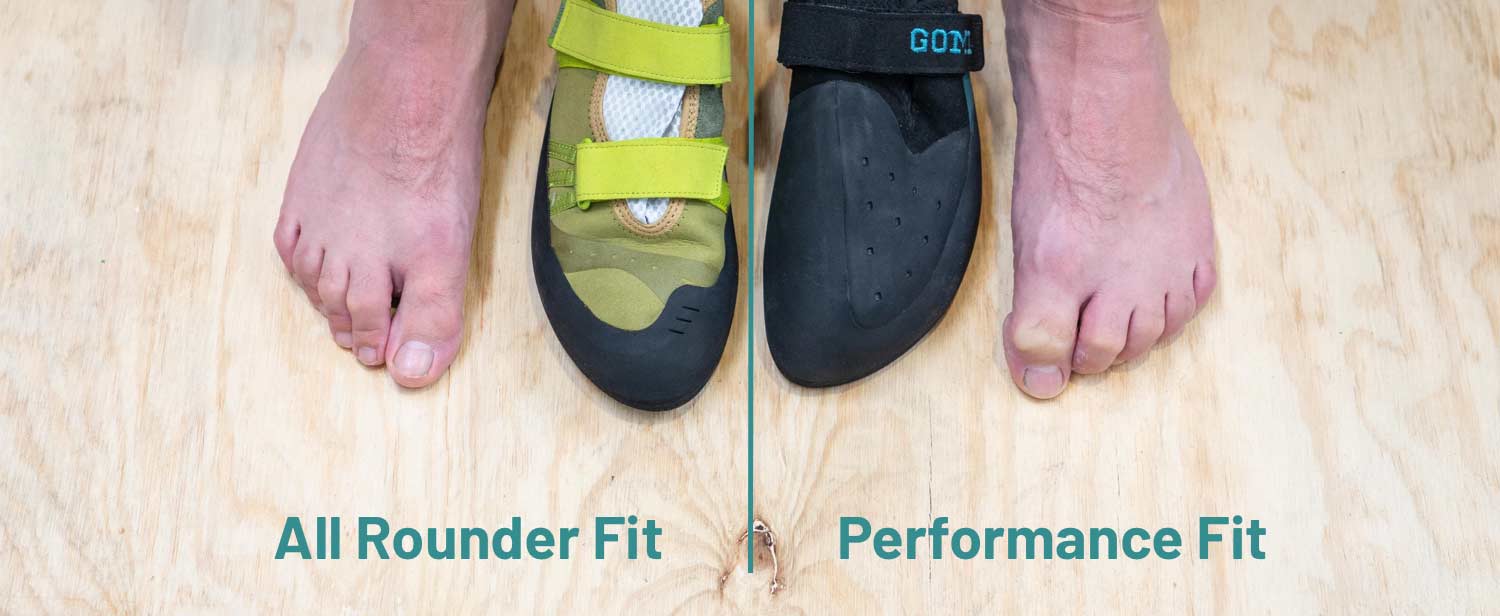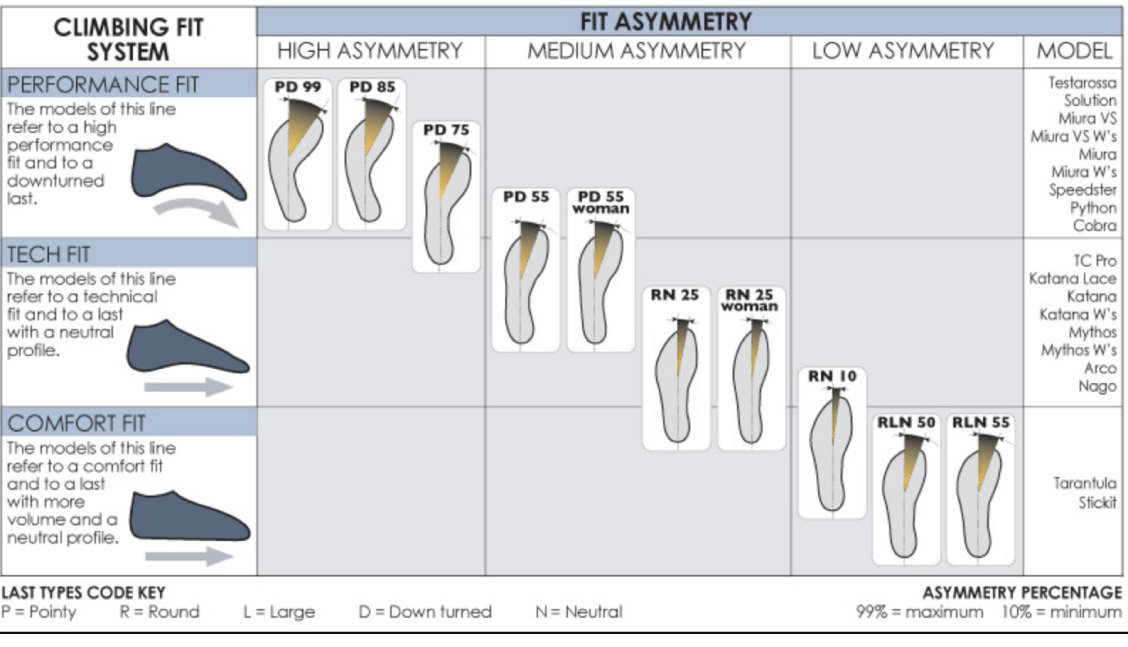Understanding Climbing Shoe Design and Construction
The Anatomy of Climbing Shoes
Before diving into fit, let’s understand what makes climbing shoes unique. Climbing shoes are designed with specific features that differentiate them from regular footwear.

- Rubber Sole: Most climbing shoes feature a sticky rubber sole for optimal grip on various climbing surfaces.
- Downturned Shape: Many climbing shoes are engineered with a downturned shape to help in precision foot placement on small footholds.
- Lacing vs. Velcro: Shoes come with either lacing or Velcro straps, each offering its advantages in fit and adjustability.


Real-World Experience

Take the example of Sarah, an intermediate climber who transitioned from a beginner shoe to a more performance-oriented one. Her experience taught her that a tight fit improves her precision and comfort when climbing. However, she learned the hard way that overly tight shoes can lead to foot pain and even long-term damage.
How Should Climbing Shoes Fit?

Finding the Right Size
Measuring Your Feet

To determine your climbing shoe size, start with measuring your feet. Use a Brannock device or a ruler. Make sure to measure both feet since they often differ in size. Generally, climbing shoes fit tighter, so expect to go down a size or two from your regular shoe size.
The Perfect Fit: Tight but Comfortable

When trying on climbing shoes, aim for a snug fit where your toes are slightly curled, but not painfully cramped. A properly fitting shoe should feel like a second skin, allowing you to feel the rock as you climb.
Tips for Testing Fit
- Stand Up: When standing, your toes should lightly touch the front of the shoe without being overly pinched.
- Heel Lock: The heel should feel secure, with minimal movement.
- Flexibility: While the shoe should be somewhat stiff for support, there should also be enough flexibility for appropriate foot movement.

Types of Climbing Shoe Fits
Different Fit Styles
Different climbers have different preferences and foot shapes, leading to several types of fits:
- Performance Fit: Ideal for sport climbing and competition, these shoes are very tight and downturned, providing maximum sensitivity.
- Comfort Fit: Great for beginners and trad climbers, these shoes offer more room and comfort for extended wear.
- Aggressive Fit: Perfect for steep and overhung routes, these shoes provide a downward point for optimal precision.
Case Study: Aggressive vs. Comfort Fit
Consider John, who focuses on bouldering and prefers performance fits. He shares, “While aggressive shoes gave me the edge on steep face climbs, I had to switch to a more comfortable pair for long trad routes. It’s all about knowing what type of climbing you’re doing.”
Pros and Cons of Different Fit Types
Performance Fit
| Pros | Cons |
|---|---|
| Enhanced precision | Can cause foot pain |
| Improved power transfer | Not suitable for long climbs |
| Better for technical routes | Limited toe room |
Comfort Fit
| Pros | Cons |
|---|---|
| All-day comfort | Less sensitivity |
| Suitable for all types of climbing | Less performance-focused |
| Easier to break in | Might lack support on technical climbs |
Essential Tips for Finding Your Perfect Fit
1. Try Before You Buy
Climbing shoes should always be tried on before purchase. Many stores have climbing walls where you can test the shoes in a climbing environment.
2. Break Them In Gradually
New climbing shoes can be stiff. Break them in with shorter climbing sessions. Gradually increasing wear time will help you get accustomed without pain.
3. Pay Attention to Sizing Variations
Different brands have varying sizing policies. Always check size charts specific to the brand you are purchasing.
4. Consult with an Expert
When in doubt, consult with a fitting expert at your local climbing store. They can provide advice based on your foot shape and climbing style.
Popular Brands and Their Fit Styles
| Brand | Fit Type | Price Range |
|---|---|---|
| La Sportiva | Performance | $100 – $250 |
| Scarpa | Comfort | $80 – $220 |
| Five Ten | Versatile | $90 – $200 |
| Black Diamond | Aggressive | $100 – $240 |
FAQ Section
FAQ 1: How tight should climbing shoes be?
Climbing shoes should be snug but not painfully tight. A good rule of thumb is that your toes should be slightly curled at the end.
FAQ 2: Can I wear climbing shoes all day?
It depends on the fit type. Comfort fits are more suitable for all-day wear, while performance shoes may lead to discomfort over extended periods.
FAQ 3: How do I know if my climbing shoes are too tight?
If your toes are cramping, or you’re experiencing pain, your shoes may be too tight.
FAQ 4: Should I size down from my regular shoe size?
Yes, it’s common to size down one to two sizes for climbing shoes, but always try them on first.
FAQ 5: How do I maintain my climbing shoes?
Let them dry out after each climb. Avoid exposing them to high temperatures, and clean them regularly to maintain grip.
FAQ 6: Are expensive climbing shoes worth the investment?
Higher-priced climbing shoes often come with better materials and technology, leading to improved performance and durability. However, ensure that the fit aligns with your needs.
FAQ 7: Can I use climbing shoes for hiking?
While some shoes may offer comfort for short hikes, most climbing shoes are designed solely for climbing and may not provide the necessary support for hiking.
FAQ 8: How often should I replace my climbing shoes?
Climbing shoes should be replaced when the rubber has worn down, or when they no longer fit properly. This could be anywhere from six months to a couple of years, depending on usage.
FAQ 9: What to do if I can’t find the right fit?
Consider trying different brands, consulting with a shoe fitting expert, or even looking into custom shoe options if standard sizes don’t work.
Conclusion
Finding the right fit for climbing shoes is a crucial element that can significantly impact your climbing experience. Whether you prefer a performance fit for intense climbs or a more comfortable fit for longer adventures, understanding your foot’s unique shape and how shoes should fit is essential for any climber.
As you venture into your climbing journey, don’t hesitate to reach out to experts, test multiple brands, and find what suits your climbing style best. Remember, the right fit not only enhances your performance but also ensures a safer and more enjoyable climb.
For comprehensive learning, you may explore more practical resources and studies on climbing footwear, such as:
Happy climbing!